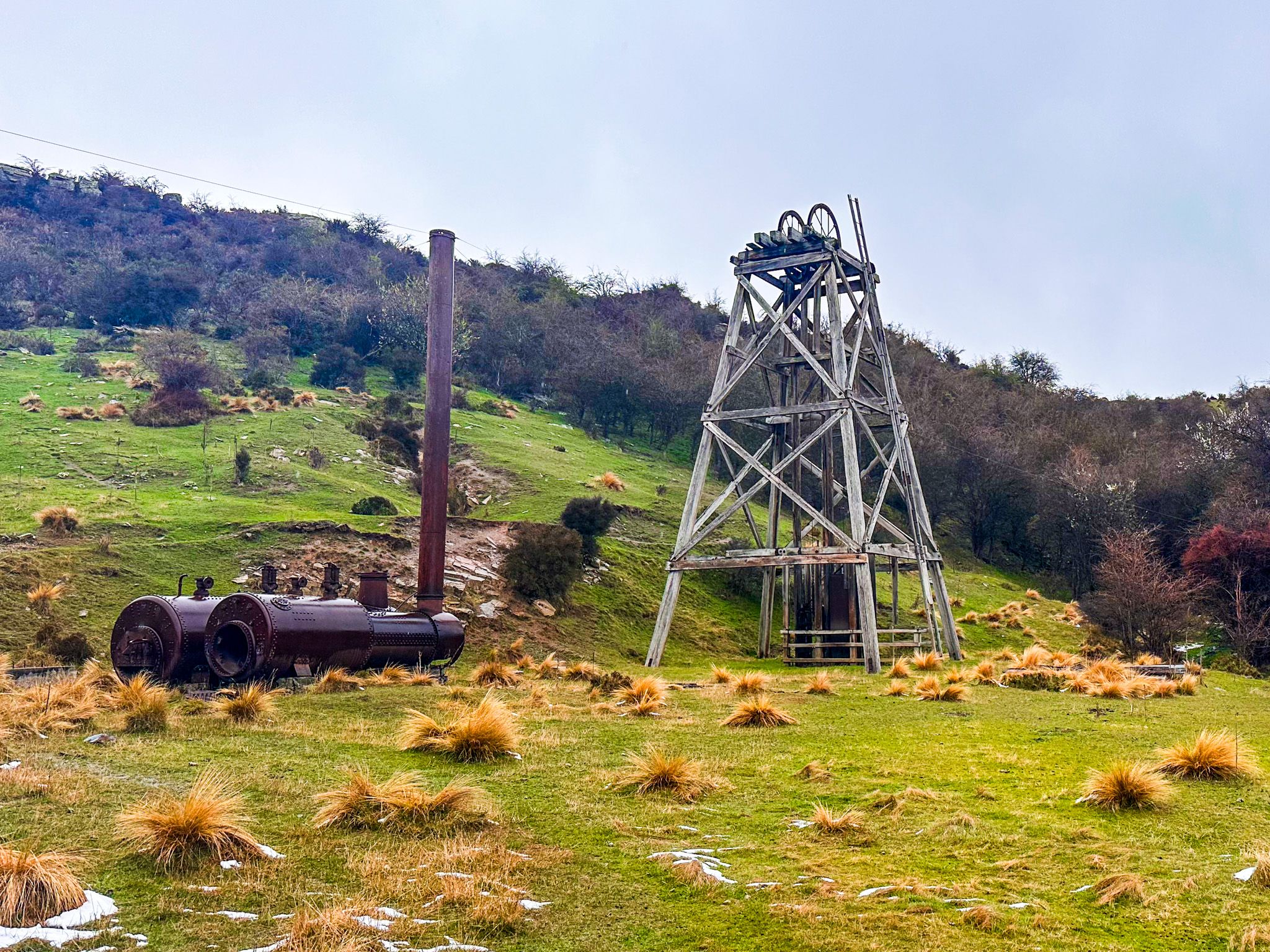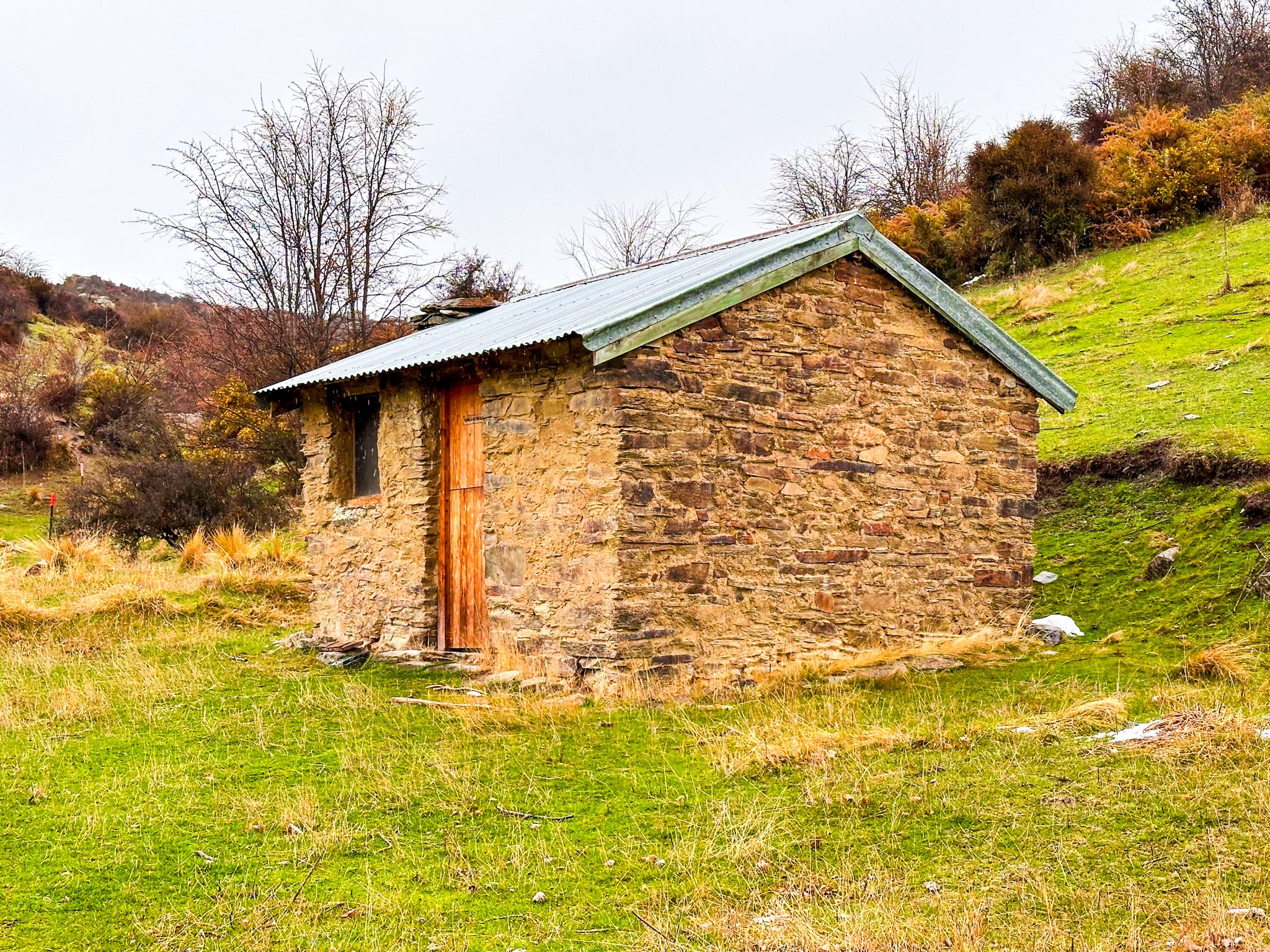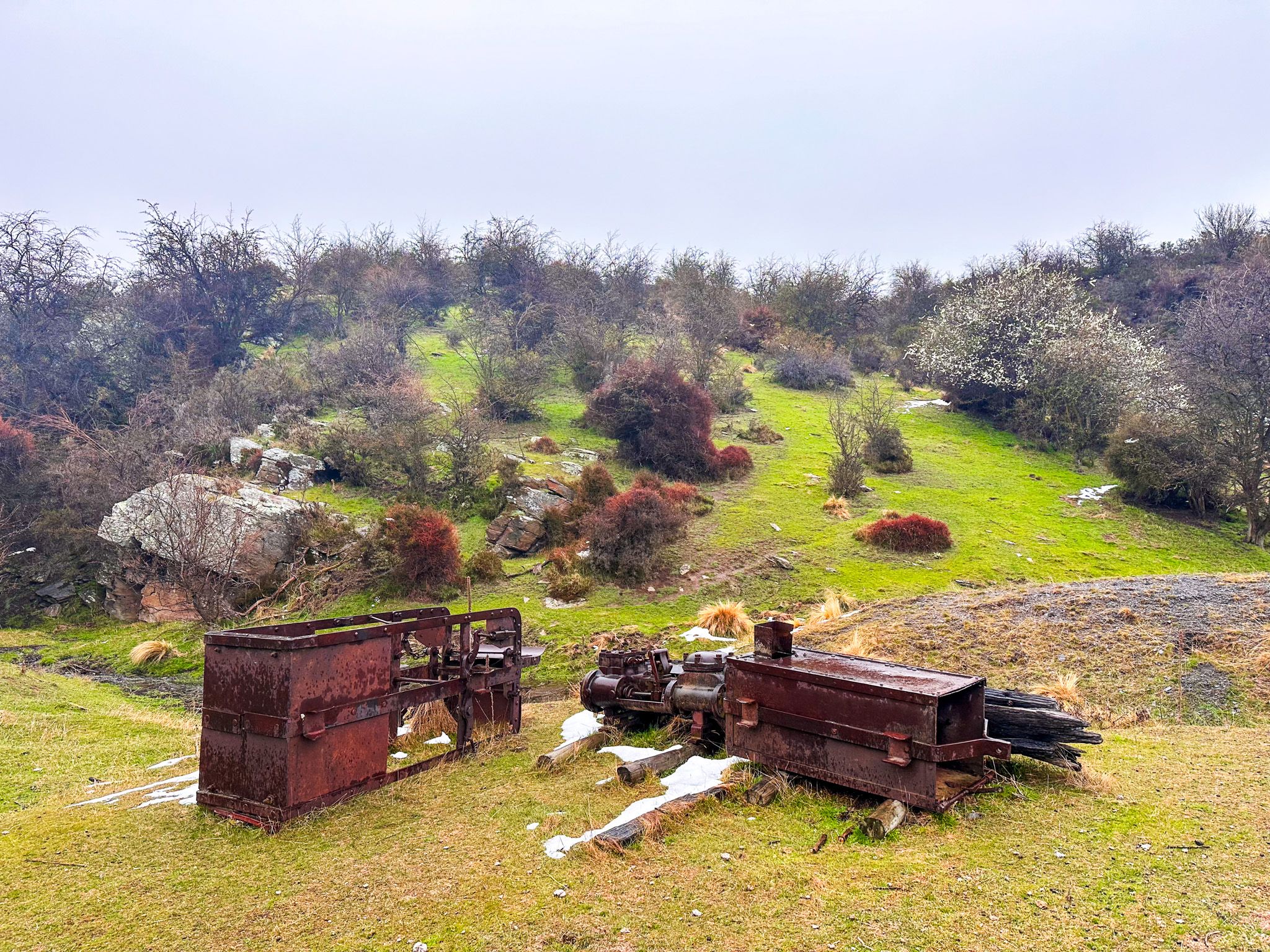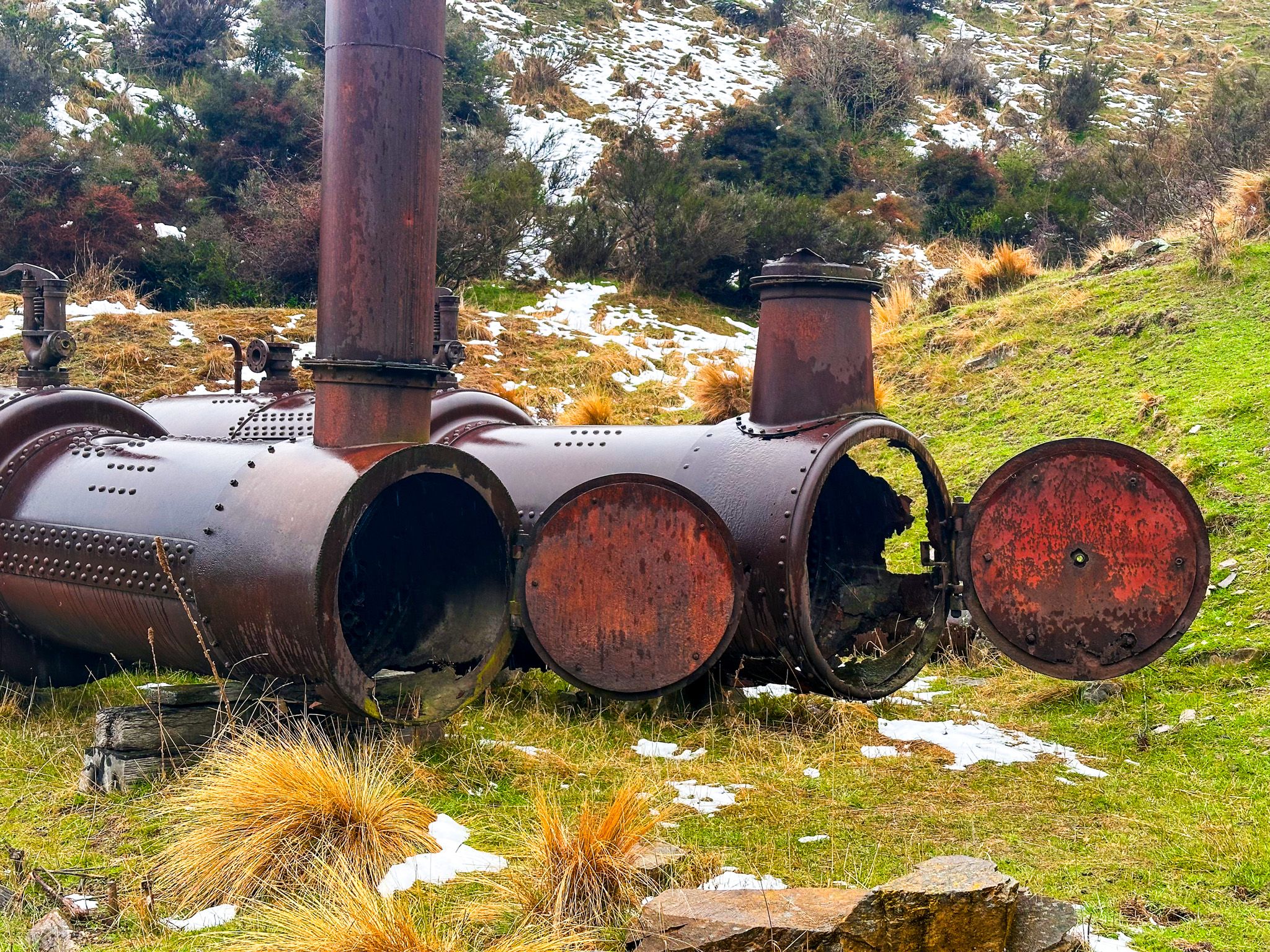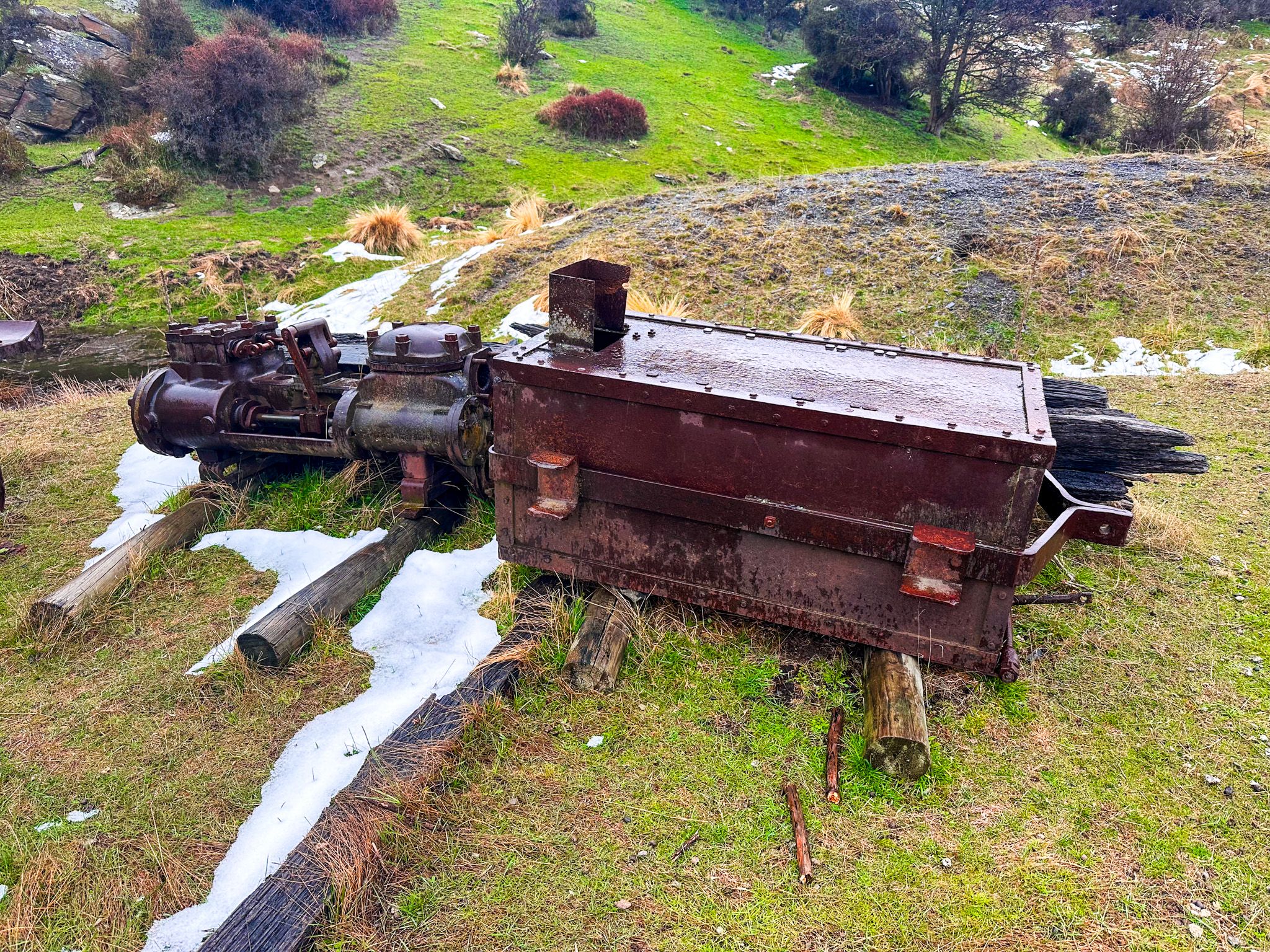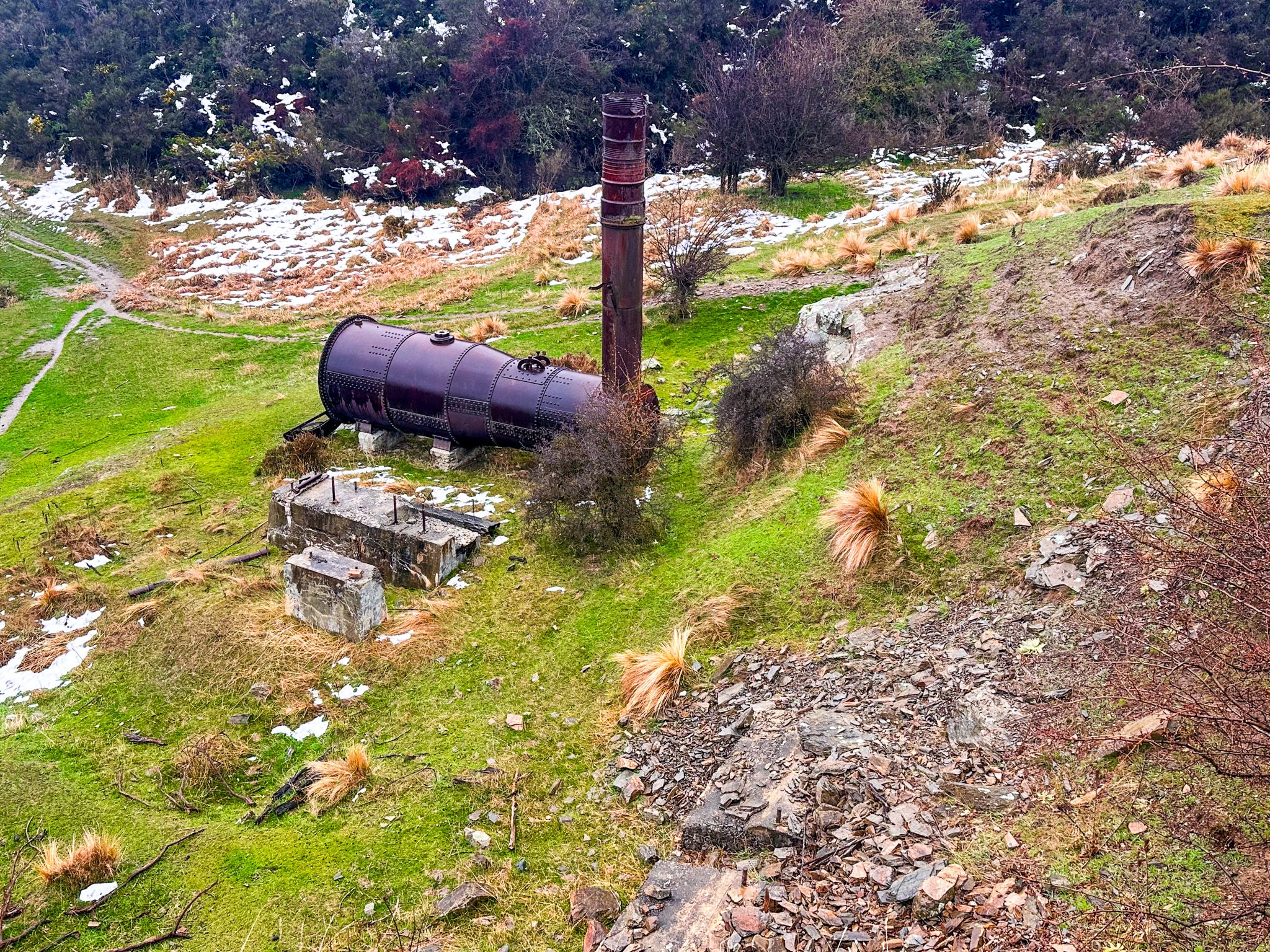Gold Mine on the Edge of Rough Ridge
The Golden Progress Mine lies about 2 km east of Oturehua on the edge of North Rough Ridge. The historic mine is an example of many that dotted the Central Otago landscape as the easier extraction of alluvial gold diminished following the rush of the early 1860s. Follow a short, easy walk and loop around the mine and facilities, including a rare poppet head and a restored miners' hut.
Quartz Reef Mining at Golden Progress
Quartz mining expanded in the Otago goldfields as the easier pickings of water-blasted alluvial diggings diminished, and mine and gold recovery technology improved. Due to the long-exposed schist rock formations in the highlands, it was quite easy to spot quartz reefs, where gold could be found embedded in the rock.
Extracting it profitably, however, was often a challenge. Mines required more capital investment. Many went through cycles of success and failure, and Golden Progress was no different. The mine first opened in 1868, at the tail end of the gold rush. It closed in 1891 due to flooding as the miners tried to drive deeper. It reopened in 1928 with a rise in the gold price and the deployment of boiler-powered pumps. But this second life only lasted a few years, and it closed permanently in 1936. Time will tell whether this is truly permanent.
What to Expect
A short 10‑minute walk leads you into the mine site across terraces and tailings, with a rebuilt miner's house above the creek. From there, you can wander among boiler ruins, explore foundation relics, and view the standing poppet head above the main mine shaft.
The poppet head was constructed in 1928 using Australian hardwood. Poppet heads were tall, A-frame structures above a mine shaft for hoisting ore and miners to and from the mine. It’s the only surviving poppet head in the historic Otago goldfields. Nearby, there are also two large boilers, now silent and skeletal. The mine operated with three lignite-fired boilers: two powering the poppet head winding gear and one driving the battery (crushing plant) downhill in the gully.
How to Get There
From Oturehua, drive northeast on the main road for 1.6 km to Reef Road. Cross the Otago Central Rail Trail and follow Reef Road to the car park next to the track access. Allow about 30 minutes to explore the site, sticking to the trail, to avoid any unmarked mine shafts.
Nearby places to visit include Hayes Engineering Works and the Idaburn Dam. St Bathans is a wonderful example of alluvial mining, while Golden Point, near Macraes, is another well-preserved example of quartz mining, with a nearby modern gold mine.
